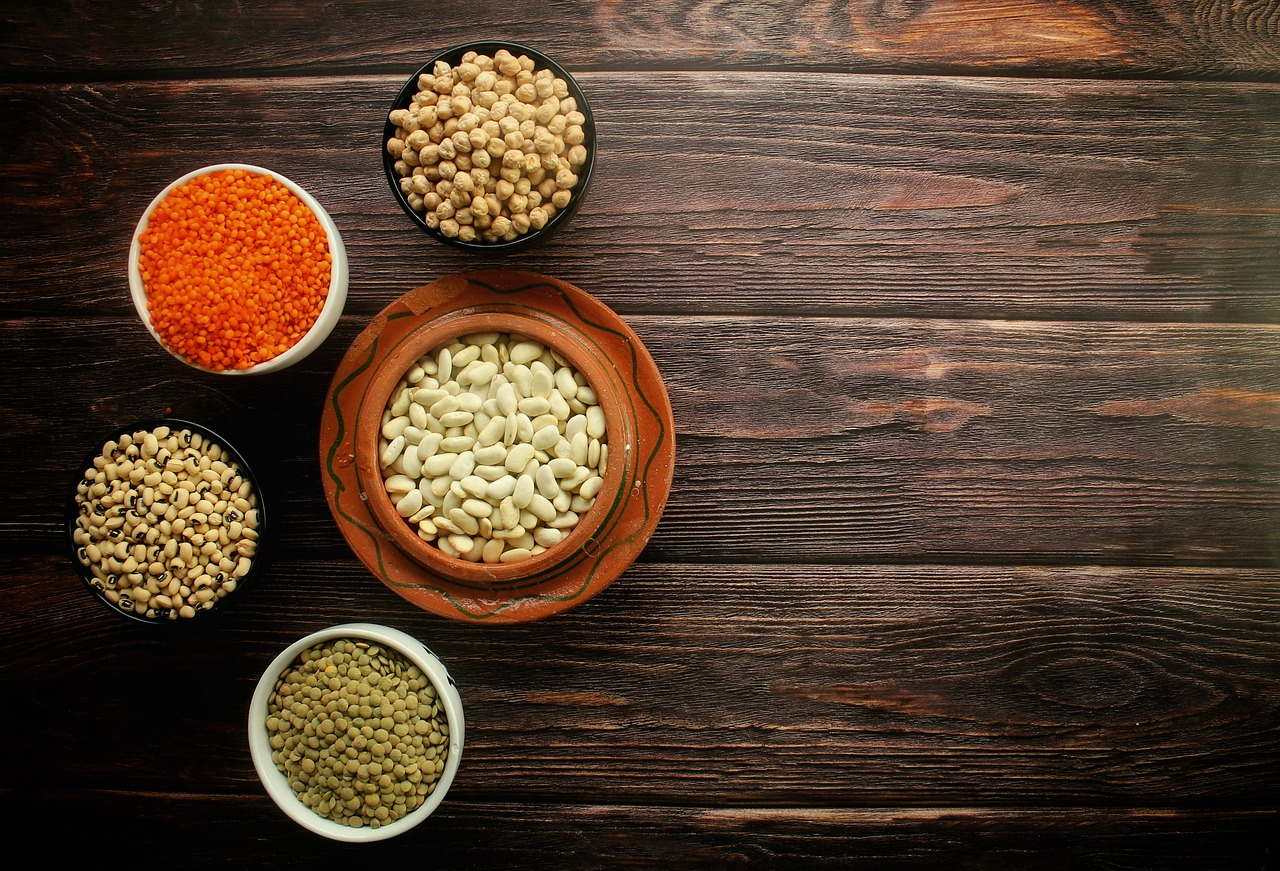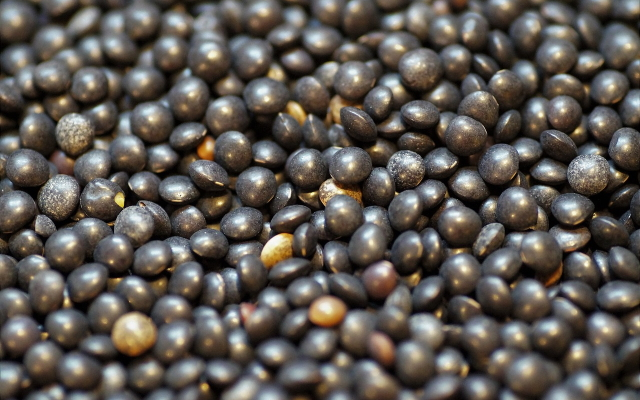When we discuss diet, (the foods we eat on a daily basis), we are often discussing it in terms of essential nutrients – macro nutrients (such as carbohydrates, fats & proteins) and micronutrients (such as minerals and vitamins).
Many health organisations around the world (the US Institute of Medicine, the EU’s Food Safety Authority) have conducted exhaustive studies to identify what nutrients are considered essential to human health (essential meaning we need to get them from our food as we cannot make them internally in our bodies). They have identified 40 essential vitamins, minerals, fats, and amino acids which we must obtain enough of daily to stay healthy.
One food compound that has not yet made the grade to be considered essential, although it is being considered more and more so for long term health, is fibre.
Dietary fibre is the non digestible complex carbohydrate found exclusively in plant foods (cereal grains, beans, lentils, fruits, vegetables). This compound is not broken down by our own digestive enzymes but passes to the colon undigested. There it performs many functions which are incredibly beneficial to our overall health. In this article I aim to show you some of these benefits and how you can get more fibre in your diet.

Why do we need to discuss fibre? Don’t we get enough in our existing diets? If you live in rural China or Africa then the answer is probably yes. However if you live in the industrialised world you more than likely do not get nearly enough fibre in your diet.
Traditional peoples the world over have for thousands of years relied on wholefood plant based foods as a source of energy and nourishment. They consumed lentils & beans, cereal grains and root vegetables (as well as fruits and berries) in large amounts daily. They also happened to suffer from much lower rates of diseases like Heart disease, Cancer and Diabetes, unlike the modern populations today.
Over the past 100 to 200 years the foods we eat have altered significantly to those of our ancestors. We have had large scale agriculture producing faster growing, higher yield crops (which happen to be higher in sugar content but lower in essential vitamins and minerals). We have also had grain refinement meaning much of our diet has shifted from whole grain foods like whole wheat breads and pastas to refined, white flour foods such as white bread, white pasta, pastries etc. We have also seen an increase in the number animal foods in our diet.
All of this change has meant a significant reduction in our daily intake of fibre (and complex carbohydrates). Average intakes today are approximately 15 grams per day vs the intakes of rural Africans eating indigenous diets, as well as (most likely) our ancestors – who consume(d) between 50 – 100 grams per day of dietary fibre.
We know from studies of the people who get more fibre that they have lower rates of heart disease, cancer and many other chronic diseases. So how do we address this? How do we get more fibre in our diets and reap the benefits in terms of well-being and long term health?
It is important that we understand the benefits come from dietary fibre (not supplementary fibre like Metamucil or Psyllium). So if we look at our ancestors, rural people and what we know about food compositions we can see that foods with the highest fibre contents in general are unprocessed whole plant foods – particularly cereal grains, legumes, nuts & seeds, fruits and vegetables – see table listing the top fibre rich foods below.
| Foods Rich in Fibre – Fibre Content Per 100 grams | |||
|---|---|---|---|
| Cereals / Grains | Legumes | ||
| Bulgar Wheat | 18 grams | Lentils | 30 grams |
| Barley | 17 grams | Split Peas | 26 grams |
| Rye | 15 grams | Kidney Beans | 25 grams |
| Wheat | 12 grams | Black Beans | 15 grams |
| Oats | 11 grams | Soy Beans | 9 grams |
| Millet | 8 grams | Chickpeas | 8 grams |
| Nuts & Seeds | Fruit | ||
| Chia | 38 grams | Dried Figs | 10 grams |
| Flax | 27 grams | Dates | 8 grams |
| Sesame | 17 grams | Avocado | 7 grams |
| Almonds | 12 grams | Raspberry | 6 grams |
| Sunflower Seeds | 11 grams | Strawberries | 5 grams |
| Hazelnuts | 11 grams | Blackberries | 5 grams |
| Vegetables | |||
| Artichokes | 9 grams | ||
| Potatoes | 8 grams | ||
| Sun Dried Tomatoes | 6 grams | ||
| Peas | 5 grams | ||
| Parsnips | 5 grams | ||
| Carrots | 3 grams | ||
We can begin to incorporate more of these foods in our diets. This will result in short term benefits like improved digestion, reduced gut inflammation and better energy levels (the soluble fibres slow absorption of sugars and keep our blood sugar more stable) as well as the longer term benefits mentioned above.

Some examples of recipes that are rich in fibre are:
- Overnight Oats (Porridge) with added flax seed and berries
- Lentil Dhal served with Brown Rice
- Vegetable Curry served with Quinoa or Amaranth
- Wholewheat Black Bean Wraps

** You don’t have to use vegetarian recipes or remove meat or refined carbohydrates / cereals totally – just making some room in some recipes for the types of foods listed above can help enormously **
You can also make some simple additions to foods / simple changes to existing recipes to bump up the fibre intake:
- Add berries and seeds to porridge or breakfast cereal
- Replace refined grains and rice (white rice, white pasta) with unrefined whole food alternatives – whole wheat, brown rice, or even other whole grain cereals such as quinoa, amaranth or buckwheat
- Take a trip to the local health shop or even the wholefoods section in the local supermarket – many whole grains & legumes are kept in stock – Quinoa, Barley, Millet, Bulgar, Chickpeas, Kidney Beans, Black Beans – start with one or two and try something new!
- Canned beans and lentils are great if you don’t want to cook them from scratch – canned legumes are precooked – they just need to be drained, rinsed and added to your dish – they will take time to heat up so add them before everything else in the sauce has cooked completely.
In Summary:
Although today we have access to an abundant array of diverse foods, we also have many foods in our shops and on our plates that can be lacking in the fibre (as well as other nutrients) we really need for optimal health. We can slowly begin to change this so that we consume more whole foods rich in fibre, vitamins, minerals and phytochemicals which can reduce our risk of chronic disease and really help to improve our overall well-being.








